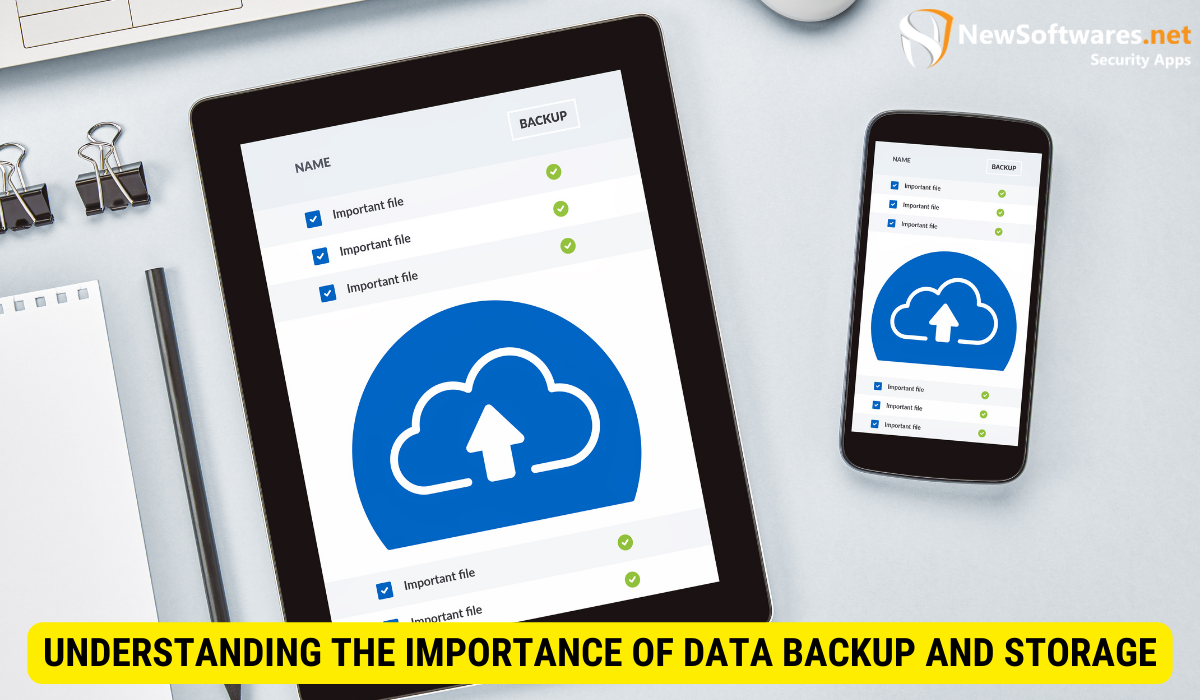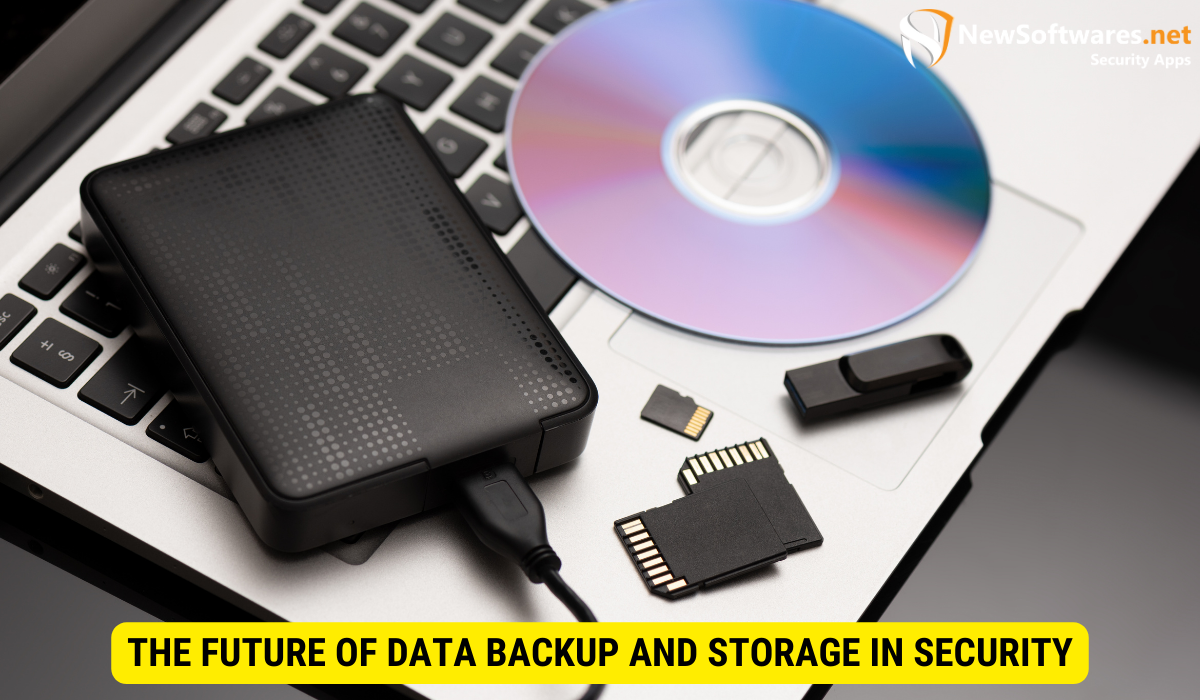Data backup and storage are vital in physical safeguard standards for security, providing a safety net against data loss due to hardware failures, cyberattacks, and disasters. They ensure the availability and integrity of critical data for business continuity and compliance with regulations.
Understanding the Importance of Data Backup and Storage

In today’s digital age, data backup and storage play a vital role in conserving the security and protection of sensitive information. With the growing threat of cyberattacks and data breaks, businesses and organizations must prioritize the implementation of robust data backup and storage strategies.
Defining Data Backup and Storage
Data backup refers to the course of creating copies of important data or files to ensure their availability in the event of accidental deletion, hardware failure, or cyber threats. On the other hand, data storage involves securely storing the backed-up data for future retrieval and use.
When it comes to data backup, there are various methods that organizations can employ. These include full backups, which involve creating copies of all data; incremental backups, which only backup changes made since the last backup, and differential backups, which backup all changes made since the last full backup. Each method has its advantages and disadvantages, and organizations must select the one that best suits their needs.
Data storage, on the other hand, involves the physical or virtual storage of backed-up data. Physical storage options include external hard drives, tape drives, and network-attached storage (NAS) devices. Virtual storage, on the other hand, utilizes cloud-based services, allowing organizations to store their data securely on remote servers.
Why is Data Backup and Storage Crucial?
Data backup and storage are essential for numerous reasons. Initially, they provide a safety net against data loss due to computer hardware failures, system crashes, or natural disasters. By regularly backing up critical data, trades can restore information and resume operations swiftly.
Imagine a scenario where a company’s server crashes, resulting in the loss of important customer data. Without a proper backup and storage system in place, the company would face significant financial losses and damage to its reputation. However, with a robust backup and storage strategy, the company can quickly recover the lost data and continue serving its customers without major disruptions.
Secondly, data backup and storage are vital for protecting against cybersecurity threats. Ransomware attacks, malware infections, and hacking attempts can cause significant data loss or compromise sensitive information. By maintaining secure backups, organizations can recover data without paying hefty ransom or suffering irreparable damage.
Moreover, having a comprehensive backup and storage system in place can also help establishments comply with data protection regulations. Many industries have strict requirements regarding data retention and protection. By implementing proper backup and storage practices, businesses can ensure they meet these regulatory standards and avoid legal consequences.
Furthermore, data backup and storage also enable organizations to leverage their data for business intelligence purposes. By storing and analyzing historical data, industries can gain valuable visions into customer behavior, market trends, and operational efficiency. This information can then be used to make informed decisions and drive business growth.
In conclusion, data backup and storage are not just technical necessities; they are critical components of any organization’s overall data management strategy. By implementing robust backup and storage practices, businesses can safeguard their data, protect against cyber threats, comply with regulations, and leverage their data for strategic decision-making.
Physical Safeguard Standards for Security
Ensuring the physical security of data is equally important alongside digital protection. Physical safeguard standards encompass measures aimed at preventing unauthorized access, damage, or theft of physical assets containing sensitive information.
Physical safeguard standards involve implementing strict access controls, such as surveillance systems, locked doors, and visitor management protocols. These measures help to deter and detect any unauthorized individuals attempting to gain access to sensitive areas. Surveillance systems, including CCTV cameras strategically placed throughout the premises, provide continuous monitoring and recording of activities, ensuring that any suspicious behavior is captured and can be investigated.
In addition to access controls, organizations need to protect their data storage facilities against environmental hazards like fire, floods, or power outages. Fire suppression systems, for instance sprinklers or fire extinguishers, are installed to quickly extinguish any potential fires and minimize damage to the physical assets. Flood detection systems, on the other hand, can detect water leaks or flooding and trigger alarms to alert the relevant personnel, allowing them to take immediate action to prevent further damage. Uninterruptible Power Supply (UPS) systems are also installed to ensure that data storage facilities have a continuous power supply, even in the incident of a power outage, to prevent any disruption to the operations and potential data loss.
An Overview of Physical Safeguard Standards
Physical safeguard standards involve implementing strict access controls, such as surveillance systems, locked doors, and visitor management protocols. These measures help to deter and detect any unauthorized individuals attempting to gain access to sensitive areas. Surveillance systems, including CCTV cameras strategically placed throughout the premises, provide continuous monitoring and recording of activities, ensuring that any suspicious behavior is captured and can be investigated.
Visitor management protocols are also an essential part of physical safeguard standards. Organizations implement procedures to verify the identity of visitors, such as requiring them to present valid identification and sign in upon arrival. This helps to confirm that only authorized individuals are granted access to sensitive areas and that there is a record of who has been in the facility at any given time.
Furthermore, organizations need to protect their data storage facilities against environmental hazards like fire, floods, or power outages. Fire suppression systems, for instance sprinklers or fire extinguishers, are installed to quickly extinguish any potential fires and minimize damage to the physical assets. Flood detection systems, on the other hand, can detect water leaks or flooding and trigger alarms to alert the relevant personnel, allowing them to take immediate action to prevent further damage. Uninterruptible Power Supply (UPS) systems are also installed to ensure that data storage facilities have a nonstop power supply, even in the event of a power outage, to prevent any disruption to the operations and potential data loss.
The Connection Between Data Backup and Physical Safeguards
Data backup and storage directly contribute to physical safeguard standards. By having copies of important data, organizations can mitigate the risks associated with physical incidents such as theft, disasters, or equipment failures. Regular backups ensure that even if the physical assets containing the data are compromised or damaged, the information can still be recovered from the backup copies.
Furthermore, offsite data storage provides an extra layer of protection against on-premises risks. By storing backup copies of data in a separate location, organizations can safeguard against events that may affect the primary data storage facility, such as natural disasters or physical break-ins. This ensures that even in the worst-case scenario, where the main data storage facility is completely compromised, the organization can still retrieve its data from the offsite backups.
Implementing physical safeguard standards and incorporating data backup and storage practices are crucial for organizations to protect their sensitive information from unauthorized access, damage, or theft. By combining both digital and physical security measures, organizations can establish a complete security framework that minimizes the risks and potential impact of security breaches.
Implementing Effective Data Backup and Storage Strategies
To ensure the safety and accessibility of serious data, businesses must implement robust data backup and storage strategies.
Key Elements of a Robust Data Backup Plan
- Identify critical data: Determine the essential files, databases, and systems that require regular backups.
- Select appropriate backup methods: Choose between full, incremental, or differential backups based on data importance and frequency of updates.
- Establish backup schedules: Define the frequency and timing of backups to minimize data loss.
- Implement redundant backups: Create multiple copies of backups and store them in distinct locations to mitigate risks.
- Regularly test backups: Verify the integrity and restoration process of backups to ensure their reliability during emergencies.
Best Practices for Secure Data Storage
- Encrypt sensitive data before storing it to prevent unauthorized access.
- Utilize secure storage media and platforms with built-in encryption and access controls.
- Implement access controls to restrict data retrieval and modification to authorized personnel only.
- Maintain regular software and hardware updates to address security vulnerabilities.
- Establish proper physical security measures for data storage facilities, including secure rooms, restricted access, and surveillance.
Challenges in Data Backup and Storage
Although data backup and storage are essential for data security, organizations often encounter challenges along the way.
Common Obstacles in Implementing Data Backup
Lack of awareness, limited resources, and complexity are common barriers to implementing effective data backup strategies. Many businesses struggle to allocate sufficient time, budget, and expertise to establish and maintain a reliable backup system.
Addressing Data Storage Issues
Data storage issues can arise due to limited capacity, scalability constraints, or improper data organization. Adopting efficient storage solutions, such as cloud storage or scalable storage infrastructure, can help overcome these challenges.
The Future of Data Backup and Storage in Security

The landscape of data backup and storage continues to evolve, driven by technological advancements and emerging trends.
Emerging Trends in Data Backup and Storage
Artificial intelligence, machine learning, and automation are shaping the future of data backup and storage. These technologies enable intelligent data management, proactive threat detection, and faster recovery times.
How Technological Advancements Impact Data Security
Technological advancements play a significant role in enhancing data security. Secure cloud storage, blockchain technology, and advanced encryption algorithms provide improved data protection measures against unauthorized access and tampering.
Key Takeaways
- Data backup and storage are essential for protecting against data loss and cybersecurity threats.
- Physical safeguard standards involve measures to secure physical assets and data storage facilities.
- To implement effective data backup, identify critical data, establish backup schedules, and regularly test backups.
- Secure data storage practices include encryption, access controls, regular updates, and proper physical security measures.
- The future of data backup and storage lies in emerging technologies like AI, ML, and advanced encryption algorithms for enhanced security.
FAQs
Why is data backup important?
Data backup is important because it allows organizations to recover important data in case of accidental deletion, hardware failure, or cybersecurity incidents. It serves as a safety net against data loss and enables swift resumption of operations.
How often should I back up my data?
The frequency of data backups depends on the criticalness and rate of data changes. Ideally, organizations should determine backup schedules based on the time and effort required to recreate or recover the most recent data.
Is cloud storage a secure option for data backup?
Cloud storage can be a secure option for data backup, provided that organizations implement appropriate access controls encryption and choose reputable cloud service providers. It offers advantages such as scalability, redundancy, and offsite data storage.
What are the risks of not having a data backup plan?
Not having a data backup plan poses substantial risks to organizations. Data loss due to hardware catastrophes, system crashes, or cyberattacks can result in financial losses, reputational damage, and legal consequences. It can also disrupt business operations and erode customer trust.
How can organizations overcome data storage challenges?
Organizations can overcome data storage challenges by adopting efficient storage solutions, such as cloud storage or scalable storage infrastructure. Proper data organization, capacity planning, and regular evaluation of storage needs are also essential.
Conclusion
Data backup and storage are integral components of physical safeguard standards for security. The significance of effective data backup strategies and secure storage practices cannot be overstated in today’s digital landscape. By implementing robust data backup and storage strategies, organizations can protect against data loss, mitigate cybersecurity threats, and ensure business continuity. Moreover, embracing emerging trends and technological advancements in data backup and storage will enable organizations to stay ahead in safeguarding sensitive information and maintaining data security.
